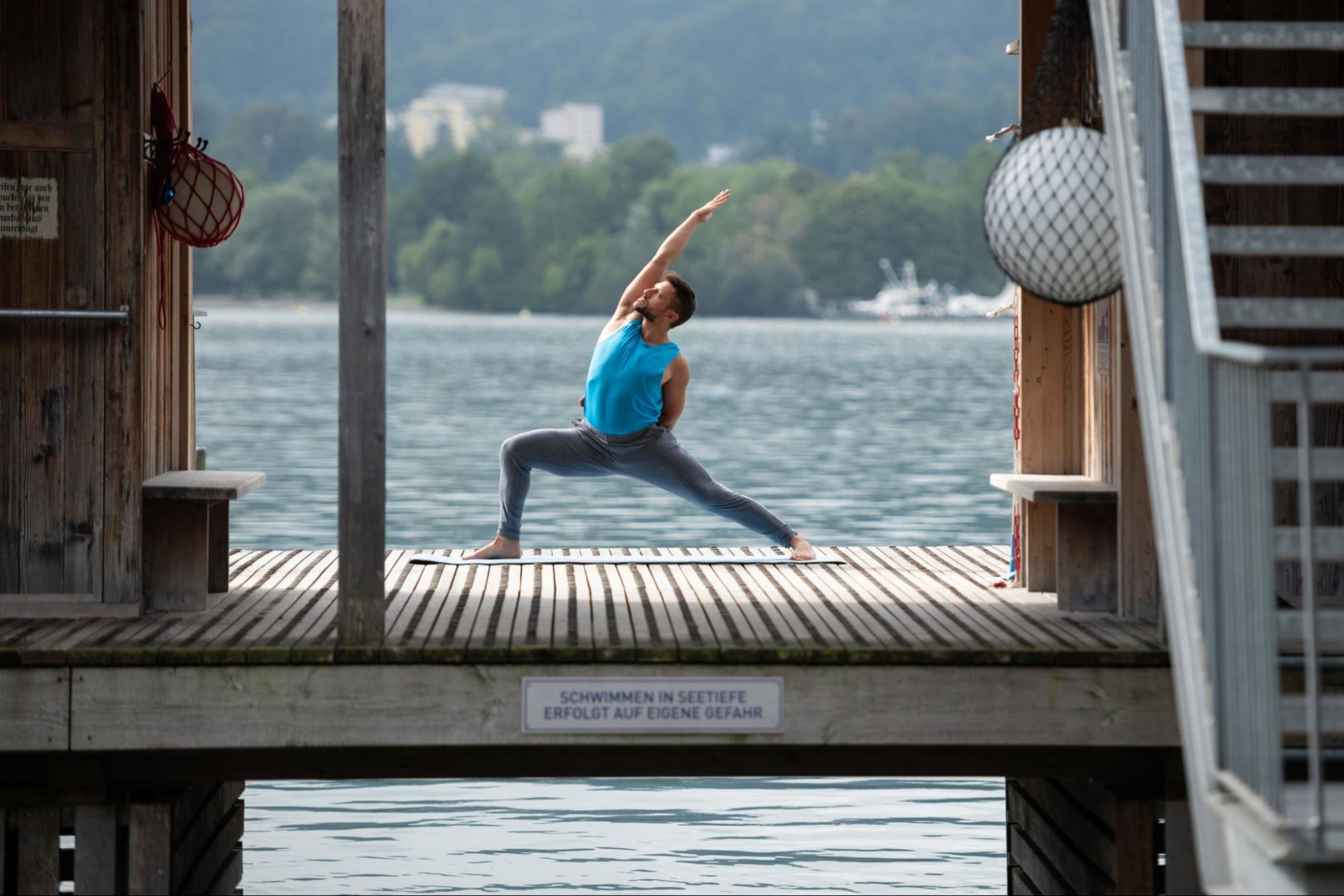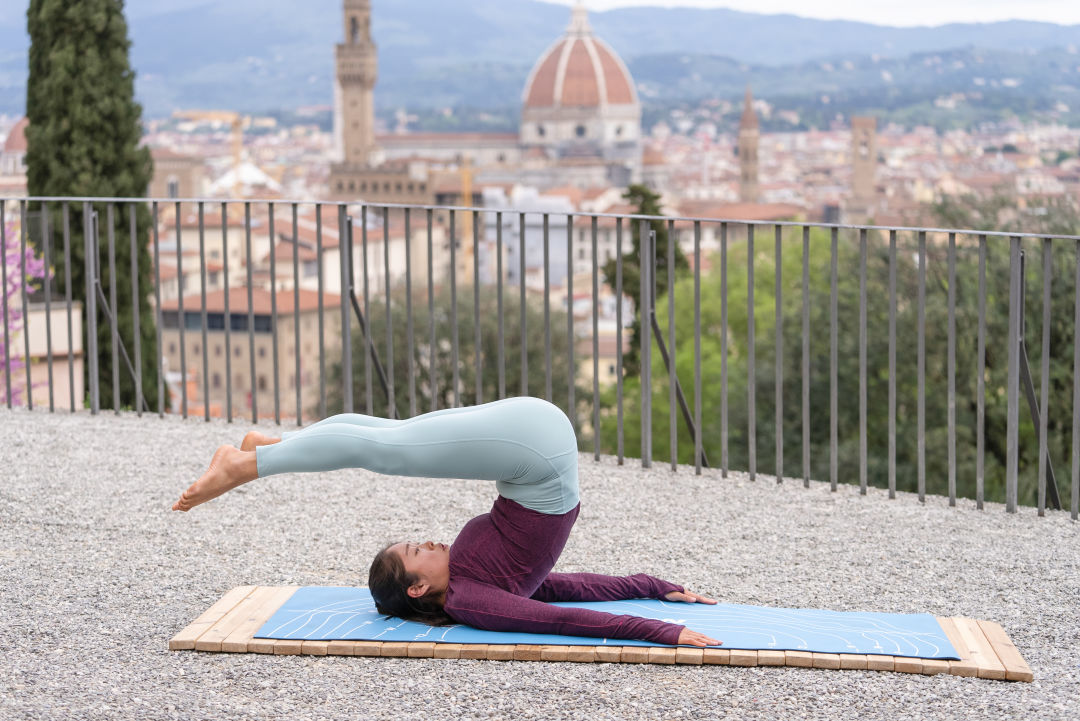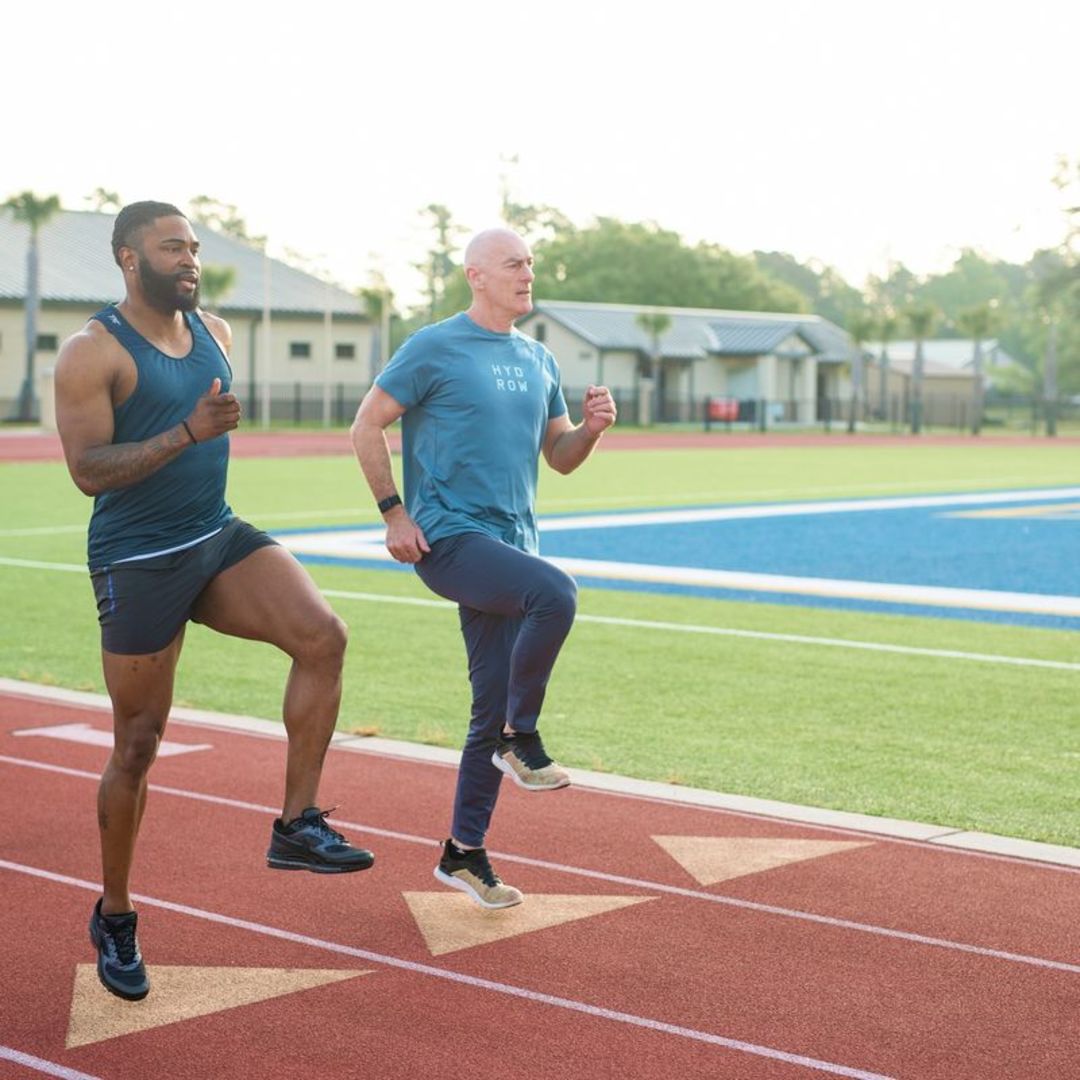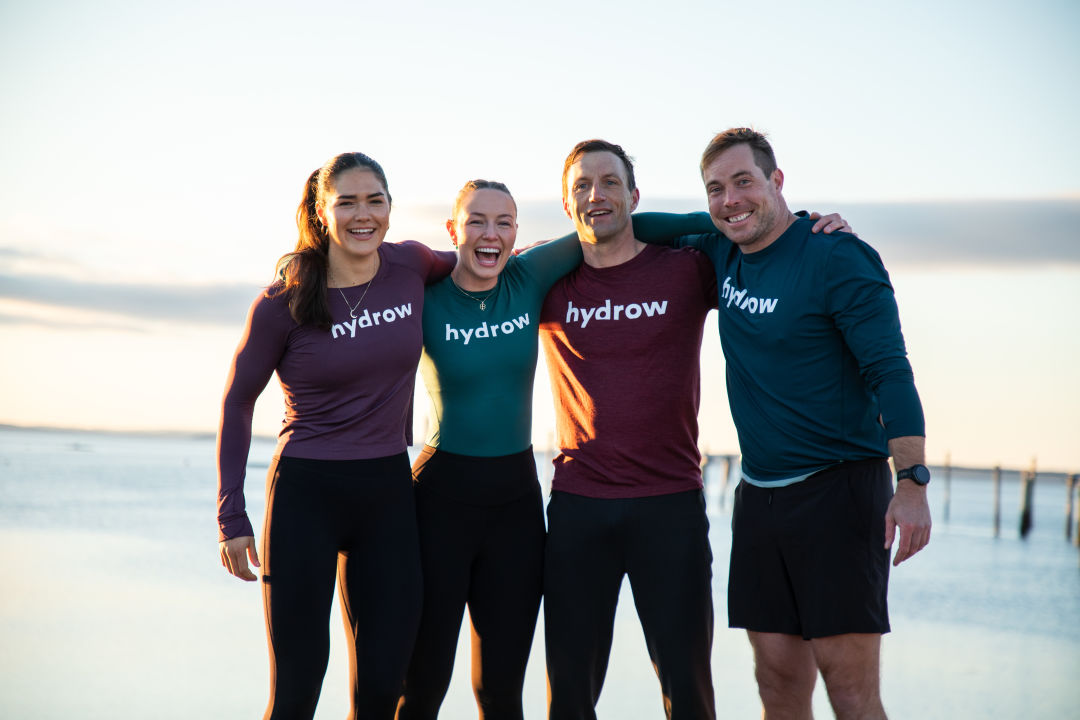What Is the Difference Between Yoga and Pilates?

Yoga and Pilates are both hugely popular practices that offer benefits for both your mind and body. They are offered alongside one another and may even look similar to a casual observer. However, yoga and Pilates actually have distinct origins and methodologies that separate them.
If you are wondering whether to start practicing yoga or Pilates, read on to learn:
What is yoga?
Yoga is a practice that originated in India thousands of years ago. As yoga has expanded around the world, it has been adapted by different cultures and has evolved into new forms and styles. However, many of the fundamental aspects of the yoga practice remain the same.
When you think of yoga, you probably picture someone in a yoga pose or posture. These postures are called asanas and are an important part of the practice, but yoga also encompasses things like breath work (called pranayama), meditation and mindfulness, and philosophy on how to live your life ethically.
There are different types of yoga classes, too, including Hatha, Vinyasa, Ashtanga, Kundalini, Iyengar, Yin, and Restorative yoga. Perhaps the most popular style of yoga is Vinyasa, a flowing practice that combines dynamic movement with breath. If you are looking for yoga that gives you a good workout, Vinyasa is a good choice. These are often called “flow” or “Vinyasa flow” classes.

Explore Hydrow’s library of yoga workouts from around the world.
Other styles of yoga, such as Yin, can help increase your flexibility, while Restorative yoga is a good option for stress relief. The more traditional styles such as Ashtanga and Iyengar are an excellent way to explore proper alignment and honor the roots of the yoga practice.
Ultimately, one of the benefits of yoga is that it can be more than just a physical exercise — some practitioners may find that learning more about yoga philosophy leads them to see it more as a lifestyle and spiritual practice. It can become a path to self-discovery and self-improvement, as well as foster a deeper connection to mind, body, and spirit.
Related blog: 20 Yoga Poses for Beginners and Their Benefits
What is Pilates?
Pilates is a physical fitness system developed by Joseph Pilates in the early 20th century. Pilates focuses on improving strength, flexibility, and body awareness. This method is specifically designed to increase core strength and stability and support proper function of the spine by promoting efficient and controlled movements.
Originally used as a way to help injured soldiers recover bodily function, Pilates remains an excellent way to help recover from an injury. The “weight” component of the strength work is low and variable, which reduces the risk of reinjury and allows for targeted strengthening.
Through a focus on breath and slow, controlled movements, Pilates classes foster a deep concentration that is central to mind-body awareness. One concept in Pilates is “centering,” wherein you imagine each movement originating from the core. This helps ensure the muscles of the core, including the deep muscles of the abdomen, lower back, and pelvic floor, are integrated while performing larger movements.

Explore Hydrow’s library of Pilates workouts from around the world.
One of the benefits of pilates is that it can be performed on a mat using only bodyweight exercises, or with specialized equipment such as the Reformer, Trapeze Table, and Wunda Chair. Using equipment can add different resistance or support to your movements, making Pilates suitable for a variety of people across the spectrum of strength and flexibility. Using Pilates equipment is a fun way to mix things up and add variety to your routine, but Pilates is certainly a practice that you can take with you on the go as long as you have a mat.
What are the differences between Pilates and yoga?
Now that you know a bit more background about yoga and Pilates, let’s highlight five important differences between these two types of exercises, including their:
Strength vs. flexibility
Breathing techniques
Spirituality
Equipment
Repetition and volume
Here we go!
1. Strength vs. flexibility
In general, yoga places more of an emphasis on improving flexibility, whereas Pilates focuses on specific strengthening work.
Of course, some styles of yoga, like Vinyasa, will include a good amount of strength work — postures like chair pose, chaturanga, and the warrior poses all help build strength. However, there are other yoga styles like Yin and Restorative where the goal is not necessarily to build strength but rather to relax the body into a deeper stretch.
This is also not to say that Pilates doesn’t increase flexibility, as moving in a controlled way through different ranges of motion (even with some imposed resistance) can result in becoming more flexible.
2. Breathing techniques
Both yoga and Pilates utilize the breath as a way to explore physical movements in a controlled way. However, Pilates tends to specifically focus on lateral thoracic breathing as a way to stabilize the core during movement.
Yoga, on the other hand, features a variety of breathing exercises meant to bring your energy up or down. For instance, Vinyasa yoga features a breath-to-movement cadence where each inhale and exhale is tied to a movement in a way that flows.

What’s your workout style?
Take our quiz and get a customized 14-day training program.
3. Spirituality
While both practices can bring about an increased sense of mindfulness by building a mind-body connection, Pilates is rooted in the physical exercise realm and yoga is steeped in a rich philosophy that practitioners can choose whether to dive into.
Yogic philosophy is centered on living ethically and reducing suffering for oneself and others, and these concepts may be woven into classes by your yoga instructor. The spiritual component is there if it interests you, but you ultimately don’t need to necessarily subscribe to these philosophies (or even be aware of them) to benefit from practicing yoga.
4. Equipment
Both yoga and Pilates happen on a mat, but things diverge from there. A yoga mat is typically thinner and grippier to help you hold poses, while a Pilates mat has more cushion to support its more dynamic movements.
Yoga may also involve props such as blankets, straps, and yoga blocks. Pilates can be performed without any equipment, but as mentioned above, there are several styles that take advantage of specialized equipment to deliver a great workout.
5. Repetition and volume
Both practices support balanced muscle development and can help correct or prevent imbalances. Pilates does this through a focus on overall body conditioning, typically performing multiple repetitions of each exercise with precision. Yoga, on the other hand, features fewer repetitions, and postures may be held for longer periods of time.
Final thoughts: What is the difference between Pilates and yoga?
Overall, yoga and Pilates are similar yet distinct practices that complement one another and can lead to numerous benefits when practiced both in tandem or separately. Choosing between the two will depend on your personal goals and needs.
Hydrow offers a wide range of yoga and Pilates workouts led by world-class Athletes, filmed in stunning locations around the world. Practice on your schedule with expert guidance that helps you build strength, improve mobility, and stay consistent.
Learn more about Hydrow’s Pilates and yoga workouts today.

Explore Hydrow’s library of 5,000+ rowing, circuit training, yoga, Pilates, and mobility workouts.






